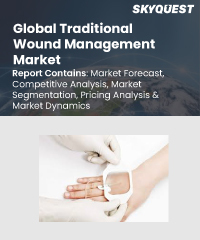
Report ID: SQMIG45E2158

Report ID:
SQMIG45E2158 |
Region:
Global |
Published Date: March, 2024
Pages:
197
|
Tables:
91 |
Figures:
76
Traditional Wound Management Market Drivers
Rising Incidence of Chronic Diseases
Sports Injuries and Accidents
Aging Population
Traditional Wound Management Market Restraints
High Cost of Advanced Products
Limited Access to Healthcare
Risk of Infections
Our industry expert will work with you to provide you with customized data in a short amount of time.
REQUEST FREE CUSTOMIZATIONWant to customize this report? This report can be personalized according to your needs. Our analysts and industry experts will work directly with you to understand your requirements and provide you with customized data in a short amount of time. We offer $1000 worth of FREE customization at the time of purchase.

Report ID: SQMIG45E2158